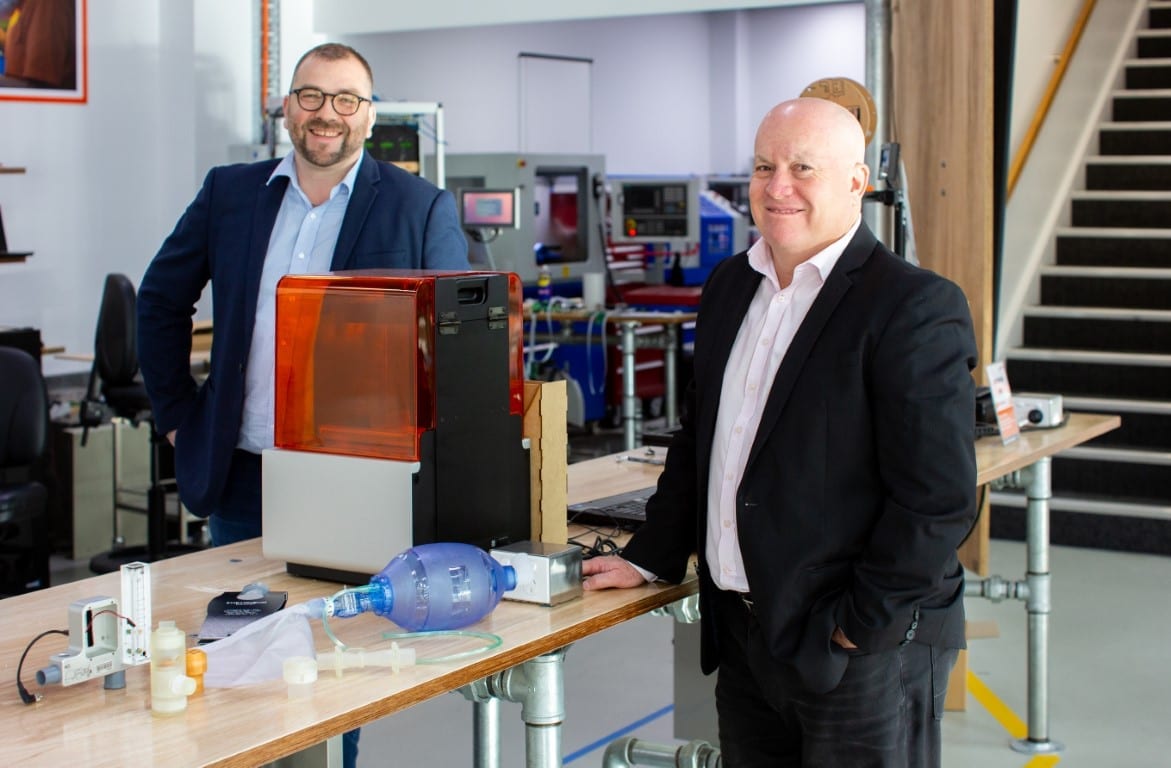Originally posted on Lets Lake Mac
A Lake Macquarie prototyping lab is playing host to cutting-edge work in the battle against the COVID-19 pandemic.

Emergency hospital ventilators designed and built in Lake Macquarie will be ready for clinical testing as soon as next month.
Electrical engineering company Ampcontrol was selected by the NSW Government to produce ventilator prototypes when the COVID-19 pandemic spread to Australia earlier this year.
The company is a partner in The Melt at Dashworks Makespace Warners Bay, a collaborative hub for start-ups and corporates to access funding, expertise, equipment and pathways to rapidly commercialise their products.
Parts vital to Ampcontrol’s ventilator prototype were designed and 3D printed at the Melt site, while the company’s electronics division at Cameron Park has been responsible for the research and development, electronics and production.

CEO Rod Henderson says NSW Health had requested 10 prototype units for clinical testing.
“If successful, full production could be mobilised quickly if the need arises during the COVID-19 pandemic,” Henderson says.
“If we go to full production of the ventilators, we could see a whole new industry here in Lake Macquarie and the Hunter supporting the local economy and jobs.”
“The ventilators could also be of benefit overseas, including in developing countries.”
The expected June delivery date of the 10 prototypes is a remarkable result considering Ampcontrol previously specialised in resources, infrastructure and energy – not medical equipment.
“What the team has achieved is nothing short of outstanding, and a testament to the engineering excellence and ingenuity in our region,” Henderson says.
Hunter New England Health, The University of Newcastle and Hunter-based electrical engineering companies Safearth and NewieVentures assisted in the prototype’s design, demonstrating the benefits of local collaboration.
“Together, we were able to design and deliver a fully functional emergency ventilator prototype to the John Hunter Hospital for clinical testing in just 18 days,” Henderson says.
Head of the Ampcontrol Warners Bay engineering team Pierre Gouhier says The Melt provided an ideal base due to its facilities and proximity to other manufacturing sites across the region.

“This environment is fitting for our research and development engineering team, who are continually working with innovators at The Melt to generate new ideas and solve issues through advanced manufacturing and rapid prototyping,” he says.
Mr Henderson says he is “immensely proud” of his company’s role in the fight against COVID-19.
“We have such a highly advanced manufacturing capability and engineering excellence in our region, which has come to the forefront in the past few weeks with so many local businesses answering the call to arms from the Government,” he says.
“With such a renewed focus on the importance of Australian manufacturing, we need to remain working together so that we can continue to produce innovative solutions and products here in Lake Macquarie and the rest of the Hunter Region.”
Dashworks Makespace is an initiative of Dantia.



